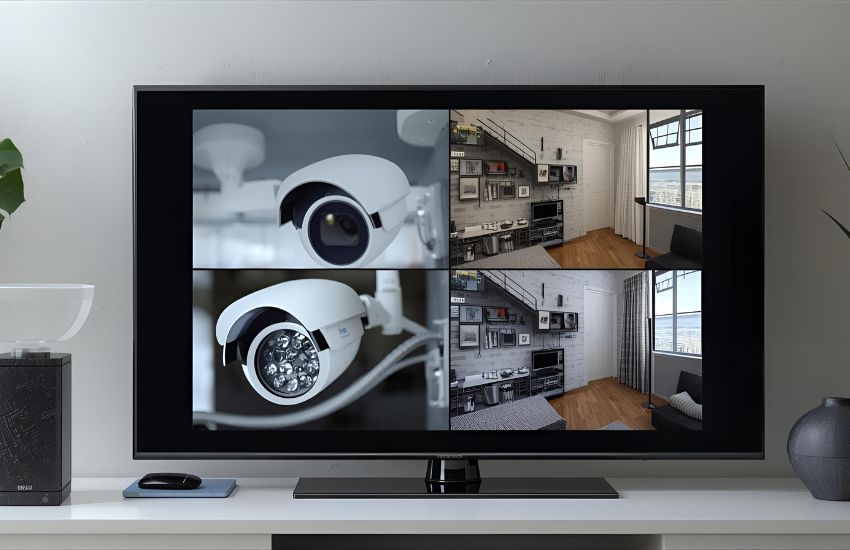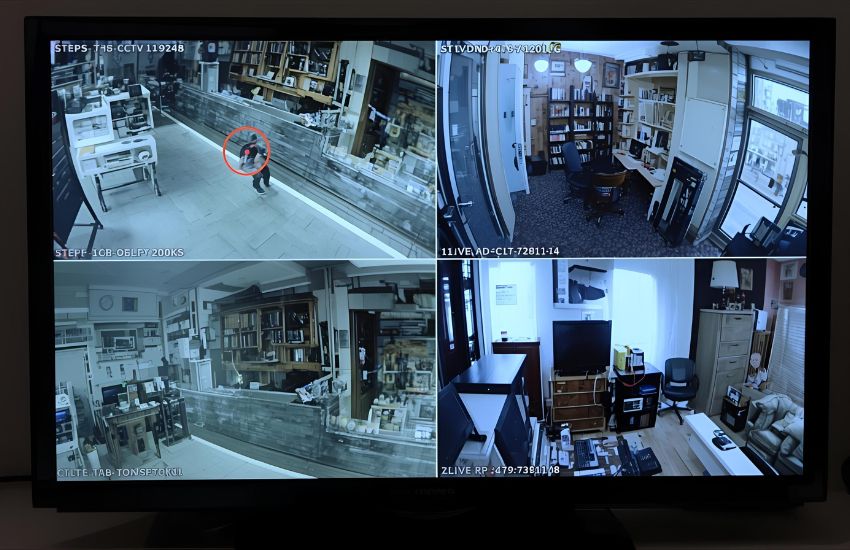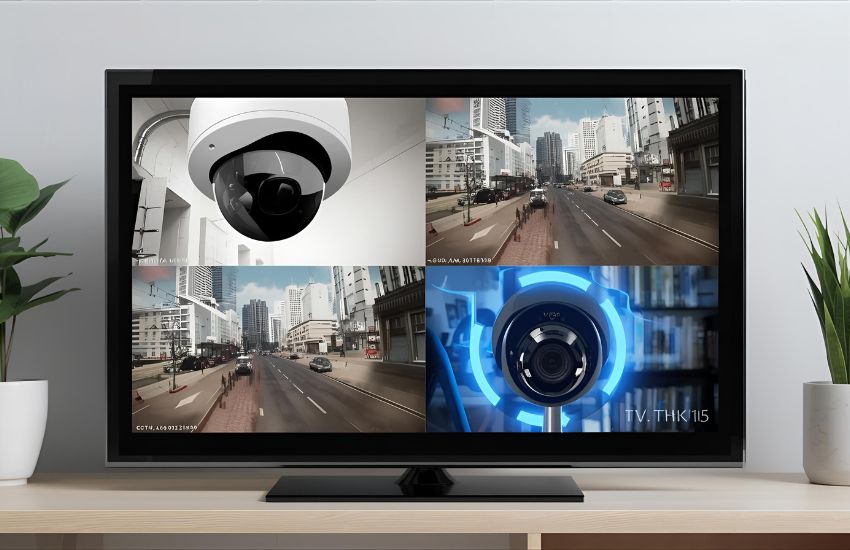Seeing real-time activity from your security cameras directly on your TV screen can transform how you monitor and respond to threats. Whether you manage a business, oversee a large property, or want tighter home security, setting up a live CCTV camera TV display system allows you to view live video without delay, offering peace of mind and operational efficiency.
Thanks to today’s smart TVs and widespread HDMI compatibility, integrating a CCTV camera or IP camera system into your TV setup is easier than ever. From connecting a single camera to managing multiple camera live streams, the right use of HDMI output, video input, and reliable cabling ensures continuous live viewing. Many users also opt for HDMI converters and video multiplexers to enhance their live video TV monitor display capabilities.
In this blog, you’ll learn how to connect your CCTV camera system to a TV with an HDMI video input, choose the proper cable setup, and get the most out of your camera TV display system. Whether you’re using a 1080p HD security camera or upgrading an older setup, we’ll walk you through each step to help you stream camera live footage efficiently and securely.
Choose the Right CCTV Camera for Clear Live Video and Wide Angles of View

To set up a live CCTV camera TV display for real-time monitoring, connect the CCTV camera’s video output (BNC or HDMI) to the TV using the appropriate cable. Power on both devices, select the correct TV input source, and adjust camera settings if needed. This setup provides seamless, real-time surveillance on a large screen
Choosing the right CCTV camera is crucial when you want to ensure clear and reliable live video on your smart TVs. You need to focus not only on image quality but also on the camera’s angles of view to capture the most important areas effectively. Cameras offering a wide angle of view provide broader coverage, reducing the number of cameras required and allowing you to monitor more space with fewer blind spots. For instance, a 180 degree dome surveillance camera can be an excellent choice when comprehensive coverage is essential.
When you connect CCTV camera systems to your TV, consider the type of video input available, such as a BNC video input for analog cameras or HDMI for digital signals. This will affect the ease of setup and the quality of the live CCTV feed you receive. Opting for HD security cameras that CCTV specialists recommend ensures your live HD footage is crisp and detailed, which is vital for effective monitoring.
Additionally, when planning your security camera TV display system, ensure there is a power outlet near your TV or monitor to support your equipment without unsightly cables or interruptions. A well-planned setup guarantees smooth streaming of camera video and uninterrupted access to video feeds, giving you peace of mind knowing your surveillance system is operating at its best.
See more about…Live Streaming on Facebook
How to Connect CCTV Cameras to Smart TVs Using HDMI or Wireless Security Options

Connecting your CCTV cameras to smart TVs can significantly enhance your real-time monitoring experience, providing clear and accessible video feeds directly on a familiar screen. Here’s how you can efficiently link your system using either HDMI or wireless methods.
Using HDMI for a Reliable, High-Quality Connection
To achieve a stable and high-definition video display, using an HDMI cable that is included with many HD security cameras that CCTV providers supply is often the most straightforward option. First, identify the video input of your TV, usually an HDMI port, and connect it directly to the camera’s HDMI output or through a video multiplexer if you’re using multiple cameras. This system connects the HDMI output to the input of your TV monitor for crisp, uninterrupted streaming.
If your setup includes traditional analog cameras, such as a bullet style camera or an optional dome camera, you might need to use a BNC video input converter to adapt the signal for your TV. Remember to ensure there is a power outlet near your TV to supply power to your camera and any necessary adapters. This arrangement creates a near perfect plug and play system, allowing you to effortlessly want to display live video with minimal configuration.
Wireless Options for Flexible and Convenient Setup
For more flexible installations, especially where running cables is impractical, wireless camera monitor systems to create a real-time stream to your android TV or other smart TV models are ideal. Wireless setups utilize Wi-Fi-enabled cameras, including advanced options like a 180 degree dome surveillance camera, to transmit video without physical cables. This eliminates the need for a power source near your TV for the camera itself, though your TV and receiver will still require power.
While wireless security solutions may require initial network configuration, they offer the benefit of easier expansion and placement freedom. This flexibility is valuable for monitoring spaces such as a video monitor at retail store or a home environment.
See more about...Live CCTV Camera TV Display
Maximize Monitoring Efficiency with a Video Multiplexer and IP Camera Setup

Connecting Your CCTV Camera via HDMI for Clear Display
When you want a straightforward and reliable connection between your CCTV cameras and smart TVs, using an HDMI cable that is included with many systems offers an efficient solution. This setup ensures high-quality transmission by connecting the HDMI output of your camera or recorder directly to the video input and that supports HDMI on your android TV or other smart TV models. This direct connection provides sharp, uninterrupted video ideal for monitoring spaces such as a video monitor at retail store or home environments.
Using HDMI not only guarantees clear, high-definition display but also creates a perfect plug and play system with minimal technical setup. The process is simple: connect the cable, switch the TV input to the correct HDMI port, and you are ready to view your live feeds in crisp detail. This method is preferred by CCTV camera pros supplies for its reliability and ease.
Wireless Security Options for Flexible Camera Integration
For situations where cable runs are impractical or you prefer more flexible placement, wireless security cameras offer a modern alternative. Wireless systems transmit the signal to your smart TV through your local network, allowing you to connect to your android TV without physical cables. This is especially useful for customers that want to display live video feeds without the hassle of extensive wiring.
Although wireless connections may require initial configuration, they offer freedom in camera placement and can support multiple cameras simultaneously on a single display monitor. These systems can also integrate with existing security technology to provide seamless access to your live surveillance feeds, making them a popular choice in retail and residential settings.
See more about…Best Coax Cable for CCTV Camera Installations
Conclusion
To ensure optimal surveillance performance, choosing the right connection method is essential. Many cctv camera pros supplies systems with an hdmi cable that is included, making connecting the HDMI output to your display monitor straightforward and reliable. Whether you are connecting the HDMI output directly to a TV via an HDMI port or using adapters that connects the BNC video output, these setups deliver clear, high-quality video that meets modern security technology standards.
For customers that want to display live feeds without extensive wiring, wireless security solutions provide flexibility and ease of installation. Such systems can eliminate the need for traditional cables and create a seamless viewing experience on your smart TVs or display monitor. By understanding how your system works and leveraging the included components, such as the hdmi cable that is included, you can establish an efficient, perfect plug and play system tailored to your needs.
See more about…Troubleshooting a CCTV Camera with No Picture
Frequently Asked Questions (How to Set Up a Live CCTV Camera TV Display for Real-Time Monitoring)
How do I connect my security camera to my TV for live view?
To connect your security camera to a TV for live view, use the appropriate output from the camera or DVR. Analog cameras usually connect via RCA or BNC cables, while modern DVRs/NVRs use HDMI or VGA ports. Simply plug the cable into the TV input, switch the TV source, and the live camera feed will display instantly.
How to set up a CCTV camera on TV?
To set up a CCTV camera on your TV, connect the camera’s video output cable (usually RCA or HDMI via DVR) directly to the TV’s video input port. Switch the TV to the correct input source using the remote. If multiple cameras are used, connect them to a DVR/NVR, then link the DVR to the TV.
How to use TV as a CCTV monitor?
To use your TV as a CCTV monitor, connect the camera’s DVR/NVR or direct video output to the TV using HDMI, VGA, or RCA cables, depending on compatibility. Select the correct input source on the TV. Ensure the camera system is powered on, and the live feed will display on the screen for real-time monitoring.
Can a TV be used as a camera monitor?
Yes, a TV can be used as a camera monitor if it has the right input ports, such as HDMI, VGA, or AV. By connecting the camera directly or through a DVR/NVR system, live video can be displayed on the TV screen. This setup is commonly used for CCTV surveillance and home security monitoring.
